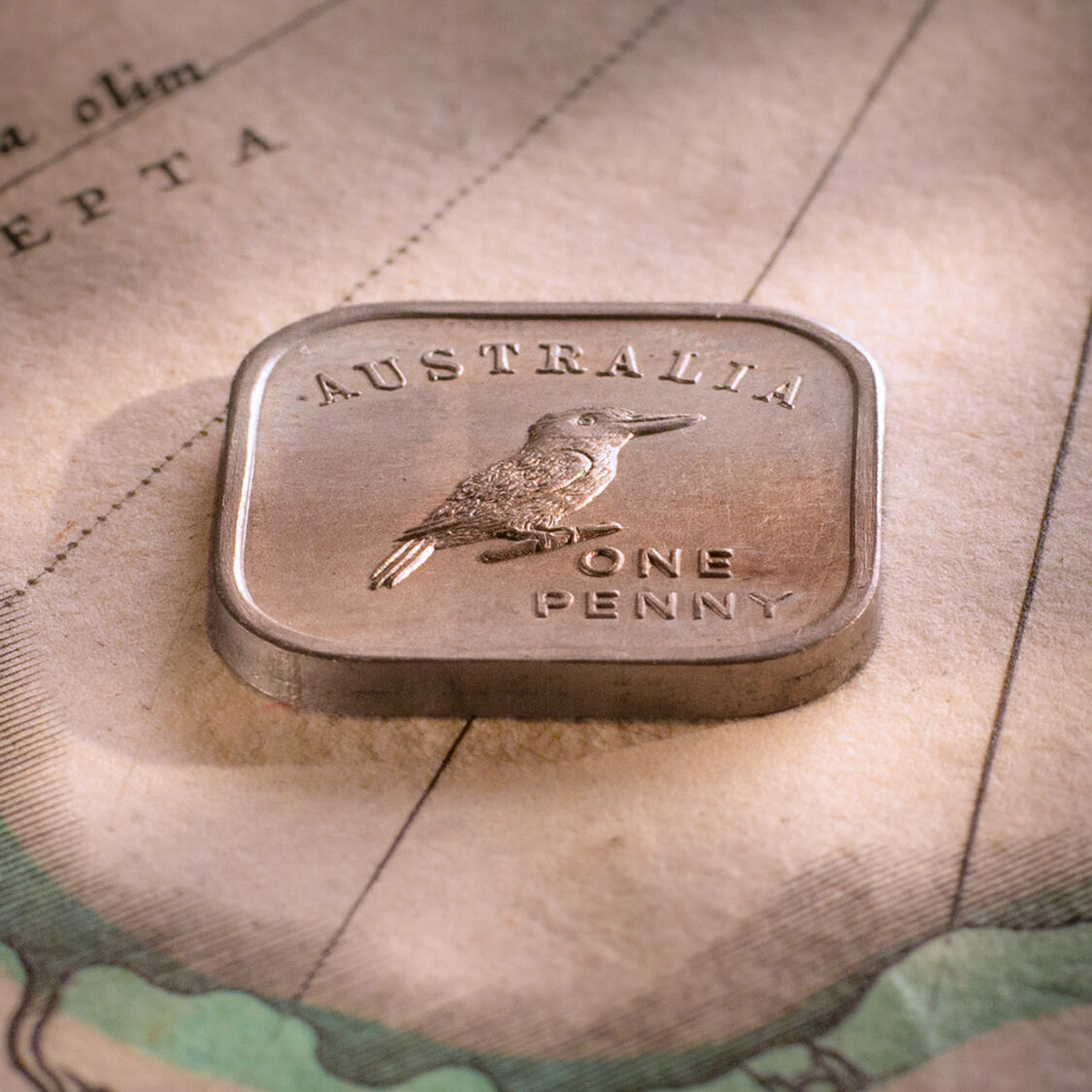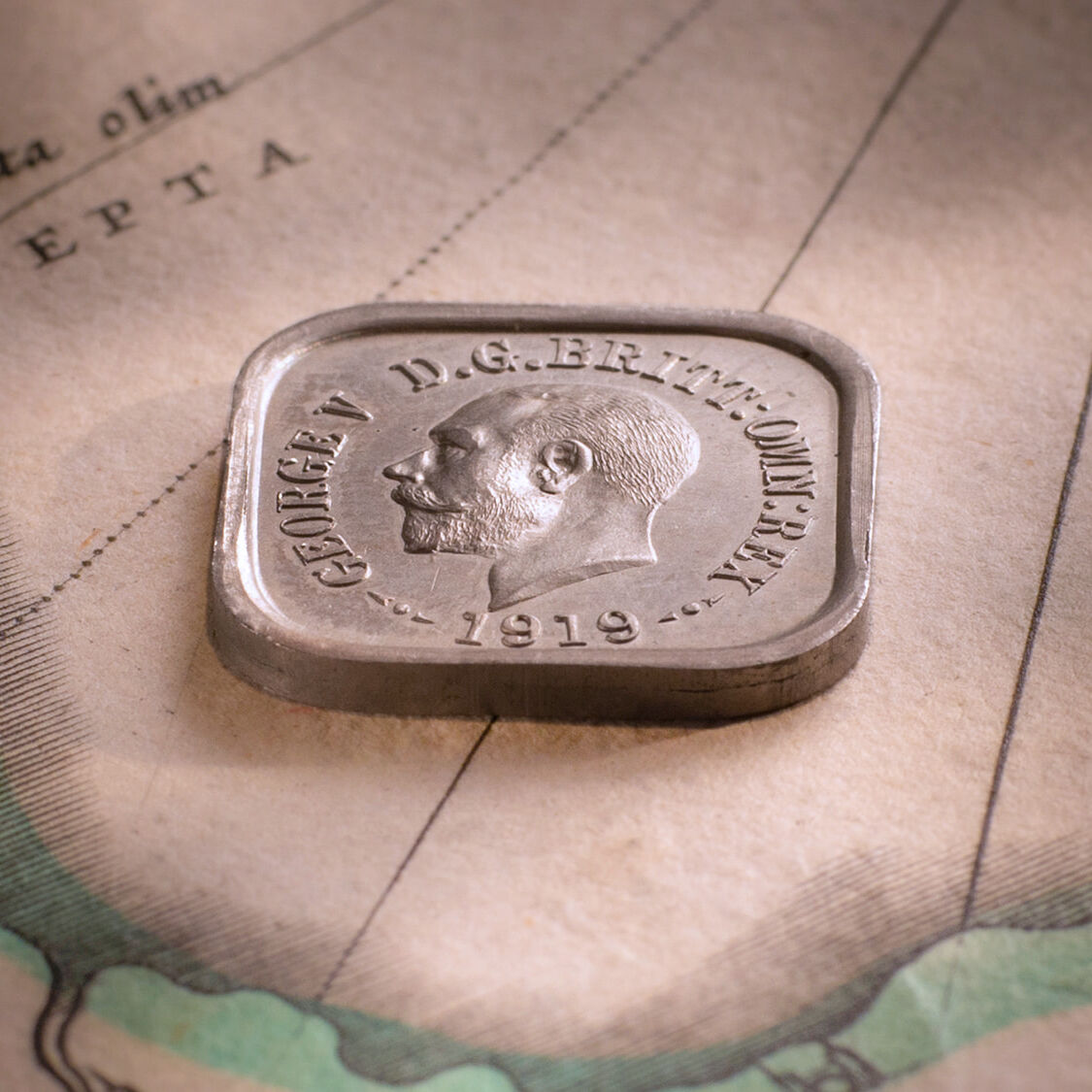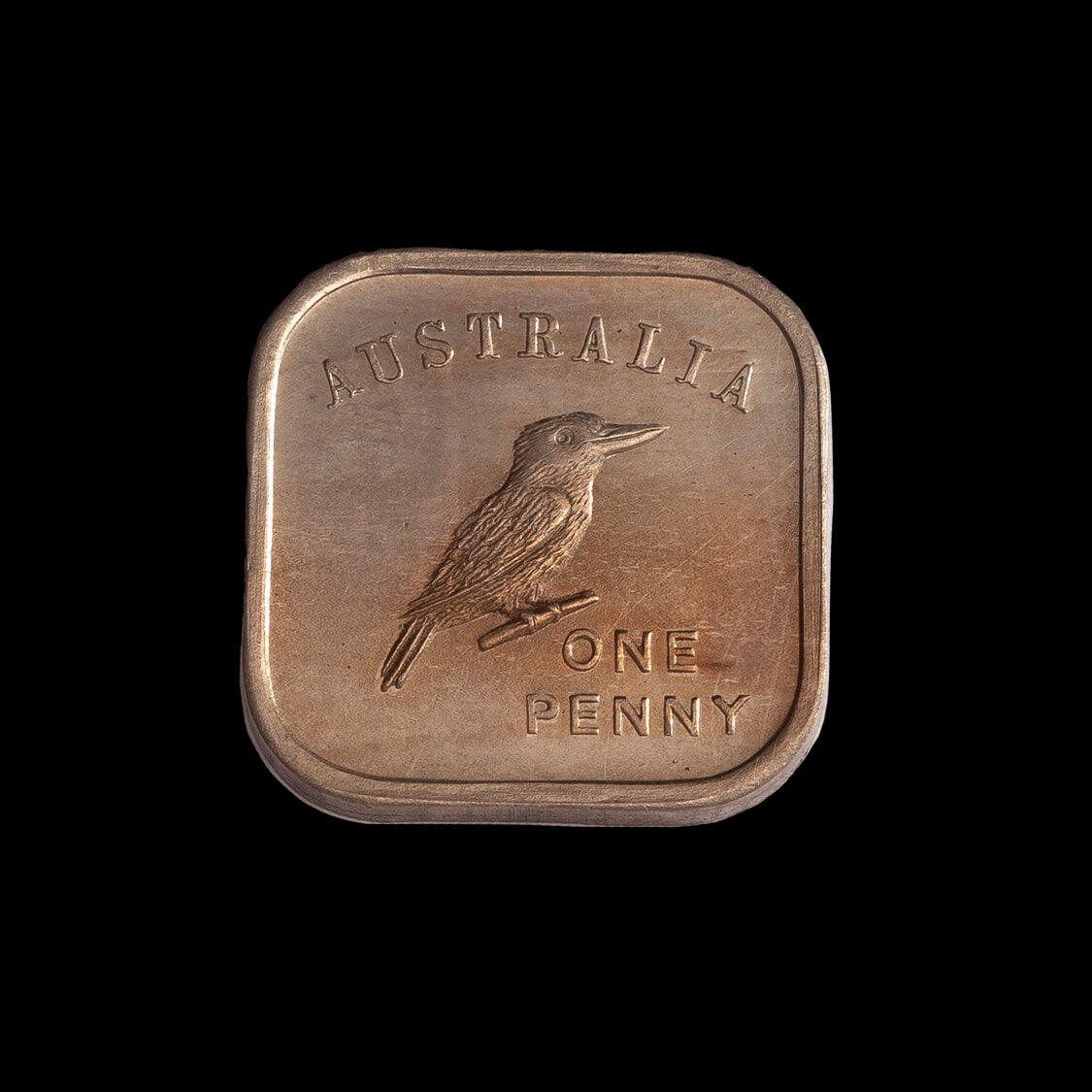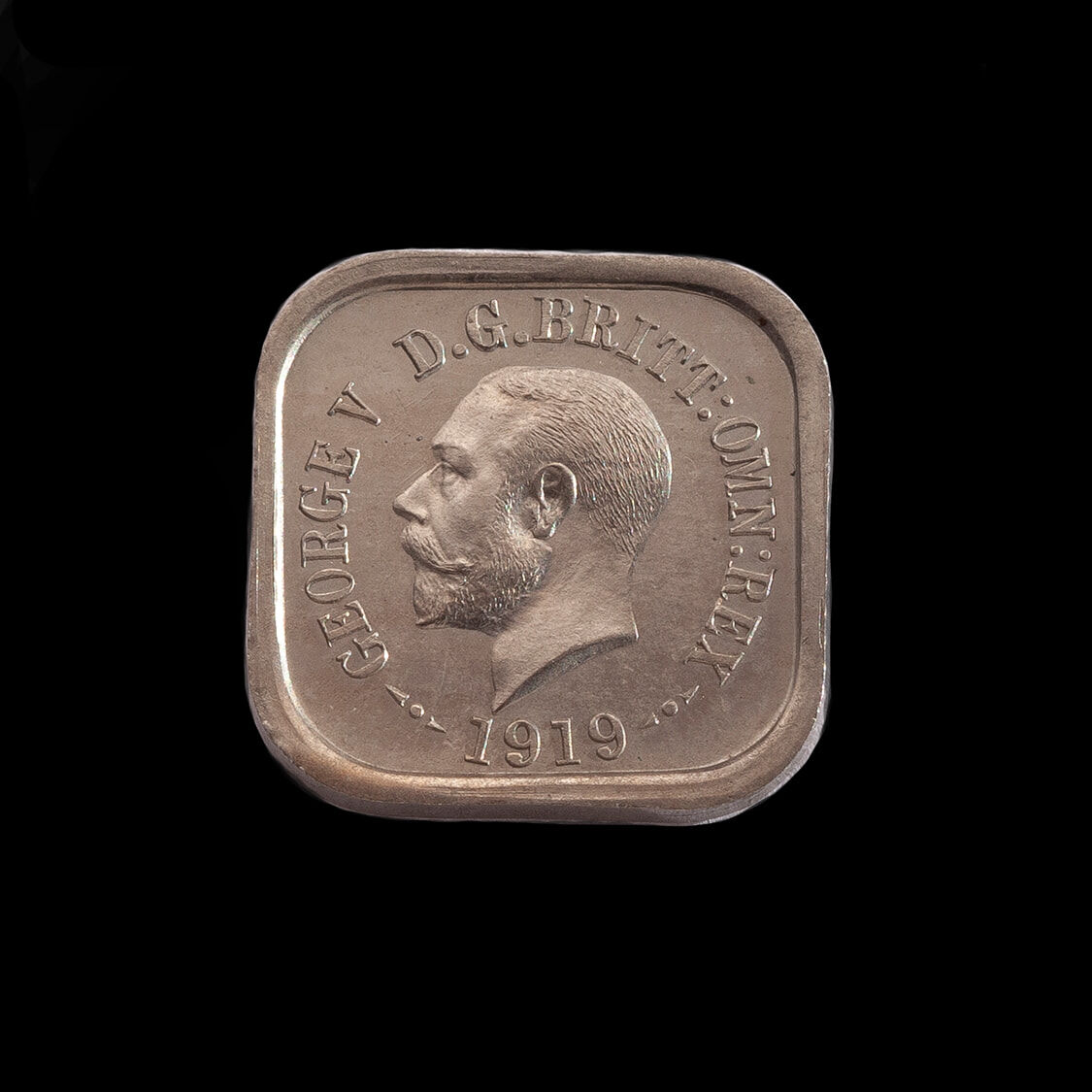The 1919 Kookaburra Square Penny featuring the unique type 3 design



The reverse of this Type 3 Kookaburra Square Penny features a sleek bird on a short branch. The value 'ONE PENNY' is modern in style. The design is unique. No other Square Penny shares the design of the Type 3. The design detail is crisp, the fields are proof-like, the edges are solid.
The 1919 Kookaburra Square Penny is a great Australian coin rarity, an Aussie classic.
The coin is cherished by collectors for its novel square shape, perfect kookaburra motif and for the evocative memories it stirs up of Australia as a nation post-World War I.
The Type 3 Square Penny, with its modern lettering and sleek-style kookaburra, has a design that is unique to its type. No other square penny type bears that design.
The 1919 Kookaburra Square Penny has one other redeeming feature. Its acute rarity.
The coins are extremely rare and their infrequent appearances are the very reason why collectors have always faced stiff competition from investors whenever an example appears.
We estimate that fifteen 1919 Type 3 Square Pennies are available to collectors. This is a minuscule number when you consider that the fifteen coins are never going to be slapped onto a table in one hit and offered for sale at the one time.
So how often can a buyer realistically expect to see a 1919 Type 3 on the market?
Our research, and our experience, confirms that you might expect to be offered a Type 3 Square Penny perhaps once every two to three years.
The history of the Kookaburra Square Penny.
Australia entered a modern age post World War I and for many Australians, it was a time for breaking out, of questioning and changing old values and behaviour and enjoying the good life.
It was a time of great change. People forgot the ‘old’ and embraced the ‘new’ in an attempt to leave the hardship and struggles of the war behind them. New technology was being created, like toasters and cars, things that today we take for granted. The fashion world was exploding, Australians embracing great change in their styles of dress.

The obverse shows an uncrowned effigy of George V within a circular legend. The Square Pennies were test pieces and were not struck to exacting standards, this coin the absolute exception to those most commonly found. The surfaces are proof-like and the edges are solid.
The history of the Kookaburra Square Penny ... continued.
Australians were identifying with their own culture, keen to lessen the emotional and cultural ties with Great Britain.
Creating a new, totally Australian coinage was a part of the deal which is why the Government floated the idea of the Kookaburra Penny envisaging a coin that would be unique to Australia.
The Government's plan was to discard the British-styled penny and halfpenny and to create a coin with a typically Australian design featuring the nation's native bird, the kookaburra.
To maximise impact, a new shape was planned with the move from circular to square. And bronze was to be discarded and a new metal taken up, that of cupro-nickel.
The proposal was contentious in that the monarch, King George V, was to be depicted on the obverse without a crown. Some say it was the rumblings of a Republican movement way ahead of its time.
Tests began at the Melbourne Mint in 1919 and continued for three years with the coins gifted to dignitaries and Government officials to assess their reaction.
Sadly, in 1921, the scheme fell apart. The final decision not to proceed seems to have been based mainly on one consideration – the large number of vending machines then in operation requiring a circular coin.
Today there are approximately 200 kookaburra coins held by private collectors, making it on a par for rarity with the 1813 Holey Dollar, the nation's first silver coin. And the 1852 Adelaide Pound, the nation's first gold coin.
The best thing for collectors is that the 200 kookaburra pennies do not bear the same design. The Melbourne Mint tested thirteen different styles introducing enormous interest, personal choice and procurement challenges into the series, for some designs are far rarer than others.
© Copyright: Coinworks
